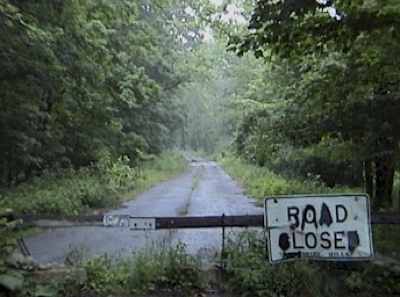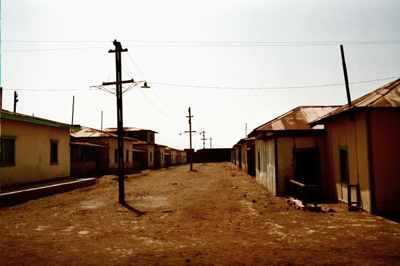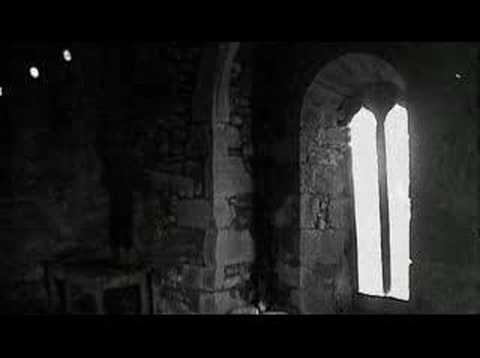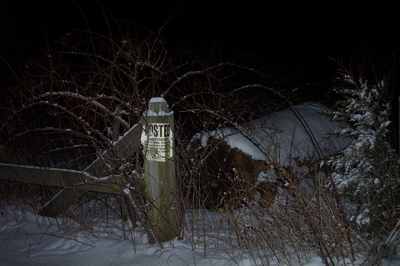We hear screams in the night, footsteps in the hall. We see shadows flit by, and fog taking the shape of something eerily familiar. We breathe, we pray, and step lightly. We scream, we curse, and we sprint. Some encounters are mysterious, others violent, all terrifying. Why do we insist on investigating places such as these? Mere curiosity only gets us so far, and then we need a driving force embedded much deeper into our psyche in order to power on. Would you spend the night alone in these places?
The History The Riddle House in Palm Beach County, Florida, was originally a funeral parlor. The Victorian house was dismantled and rebuilt in Yesteryear Village at the South Florida fair grounds. In the 1920’s the house became privately owned by Karl Riddle. The Terror Joseph, one of Riddle’s former employees, committed suicide by hanging himself in the attic of the house. Joseph, for whatever reason, hated men, and displays this hatred by attacking men who enter the attic. One man had a lid flung at his head, and men are now no longer allowed in the attic. Other places in the house are haunted as well, with furniture being frequently moved.
The History The Northern part of Summit County in Ohio is known by the eerily blunt moniker, Helltown. In the 70’s, Boston Township was the site of a government buyout, and subsequent mass eviction of citizens. The houses were intended to be torn down and the land used for a national park, but the plans never quite manifested. Legends spawned wildly, and who can blame the legend mongers? Driving through the dark, wooded landscape was enough to give you chills even when it was populated, let alone when you have to drive by boarded up houses standing next to the burnt out hulks of others (the local fire department used some buildings for practice). The Terror Whether based on a kernel of truth or cooked up in the heads of creative visitors, the persistent legends of Helltown add to the creep factor. The steep Stanford Road drop off, immediately followed by a dead end, is aptly named The End of the World. If you get stuck at this dead end for too long, according to ghost story enthusiasts, you may meet your end at the hands of many members of the endless parade of freaks patrolling the woods. Satanists, Ku Klux Klan members, an escaped mental patient, an abnormally large snake, and mutants caused by an alleged chemical spill proudly march in this parade. And if you stray from the roads, you may find Boston Cemetery, home to a ghostly man, grave robbers and, the quirkiest of all, a moving tree.
The History Stull, Kansas, is a tiny, unincorporated town in Bumfuck, Nowhere- er, pardon, Douglas County. Ten miles west of Lawrence and thirteen miles east of Topeka puts it far from anything resembling a large population center. The population of Stull is approximately 20 people. But, don’t let the deceptively quaint village fool you. A darker side lurks behind the bushes and in the shadows. The Terror In the early 20th century, two tragedies rocked the tiny settlement (please observe, these are not legend or folklore, but fact). First, a father finished burning a farm field, only to find the charred corpse of his young son in the aftermath. The second incident to occur was a man went missing, and was later found hanged from a tree. As far as legends go, the infamous cemetery is where you can find your fill of supernatural lore. The book Weird US has this to say on Stull Cemetery: “There are graveyards across America that go beyond merely being haunted and enter into the realm of the diabolical. They are places so terrifying that they say the devil himself holds courts with his worshippers there. The cemetery on Emmanuel Hill in Stull, Kansas, is one of these places.” Rumors exist stating that Stull Cemetery is one of the 7 gateways to Hell. While the old church is now demolished, many attempt to sneak in at night for a peek at the unsavory goings-on. But be warned, the police patrol heavily, especially on Halloween and the spring equinox. The place is supposed to be so unholy, in fact, that some claim Pope John Paul II refused to allow his plane to fly over eastern Kansas, on his way to an appearance in Colorado. The validity of this last claim is up for debate, but none can deny that legends or not, Stull Cemetery is a terrifying place to be.
The History Originally known as the Athens Lunatic Asylum, The Ridges was renamed after the state of Ohio acquired the property. The hospital saw hundreds of lobotomies, and often declared masturbation and epilepsy to be the causes of insanity in patients. The Terror Athens, Ohio, is listed as the 13th most haunted place in the world, as per the British Society for Psychical Research. The nearby Ohio University (which currently owns most of the property on which the Ridges is located) is said to be heavily haunted. The notorious rapist with Dissociative Identity Disorder, Billy Milligan, was housed at the facility for years. The most famous story, however is that of a 54 year old female patient who ran away and was missing for 6 weeks. She was found dead in an unused ward. She had taken off all of her clothes, neatly folded them, and laid down on the cold concrete where she subsequently died. Through a combination of decomposition and sun exposure, her corpse left a permanent stain on the floor, which is still visible today. Her spirit now haunts the abandoned ward.
The History These two abandoned mining towns in Chile were recently featured on an episode of the SyFy Channel’s show, Destination Truth. In 1872, the town was founded as a saltpeter mine, and business boomed. However, after several heavy blows (including the Great Depression), the business declined and then collapsed in 1958, and the town of Humberstone and it’s surrounding towns were abandoned by 1960. Treatment of workers in both towns bordered on slavery, and now the towns are left standing derelict. The Terror It is rumored that the dead of the La Noria cemetery rise at night and walk around the town, and ghostly images frequently show up in photographs in Humberstone. These towns are so terrifying, the residents of nearby Iquique refuse to enter them. The former residents never left, and can be seen walking around, and children have been heard playing. The cemetery of La Noria, regardless of whether its occupants actually walk at night, contains opened graves where the bodies are fully exposed, leaving you to wonder why. Is it ghosts, or is it grave robbers? As if either prospect is very appealing. Full episodes of Destination Truth, including the episode featuring Humberstone and La Noria, can be seen here.
The History The Philadelphia State Hospital at Byberry, or known simply as Byberry, was the poster image for patient maltreatment. The hospital, in its most popular form, was founded in 1907, and known as the Byberry Mental Hospital. It exceeded its patient limit quickly, maxing out at over 7,000 in 1960. It housed everything from the mentally challenged to the criminally insane. Due to its atrocious conditions, and the sub-human treatment of its patients, the hospital was closed and abandoned in 1990. It had since become a nuisance for the neighborhood, as it was a breeding ground for vandals, arsonists, Satanists, and urban explorers. It was demolished in 2006, in spite of the fear of spreading asbestos, (which is what kept it standing for 16 years). The Terror The terrifying aspect of this location isn’t so much it’s hauntings or the unsavory characters that lurked after dark (although you would have been wise to be wary of both while exploring the building). The terror here comes from the facts of the how the hospital was run. Human excrement lined the hallways, which were also where many patients slept. The staff was abusive, and frequently exploited and harassed patients. One patient had a tooth pulled without Novocaine, while another killed and dismembered a female patient. Although the killer, Charles Gable, was never found, the victim’s body was found strewn across the property. Her teeth were found being played with by another patient. Even as the hospital was in the process of closing, two released patients were found dead in the Delaware River, two successive days after their release. Perhaps that gate in Stull Cemetery opens here.
The History While this Irish castle is perhaps the most popular location featured on the list, it is worth recapping the long and often gruesome history. Although it was built by the O’Bannons in the late 15th century, the castle was taken over by the ruling O’Carrolls, to whom the O’Bannons were subject. After the death of Mulrooney O’Carroll, a fierce rivalry erupted, culminating in two brothers struggling for control. One of the brothers, a priest, was brutally murdered in his own chapel, in front of the family, by the other brother. This chapel is now know as the Bloody Chapel, for obvious reasons. Many people were held prisoner and even executed at the castle. The Terror The castle is rumored to be haunted by a vast number of spirits, including a violent, hunched beast known only as the Elemental. It is most recognizable by the accompanying smell of rotting flesh and sulphur. While renovating the castle, workers discover an oubliette, which is a dungeon accessible only through a ceiling hatch, into which prisoners are thrown, then forgotten and left to die. This particular oubliette contained three cartloads of human remains, and was filled with spikes to impale those thrown into it’s depths.
The History This New Jersey road winds through 7 miles of countryside, and along that stretch it gives us no definitive clues as to the origin of its eerie name (for those wondering, Shades of Death is not a nickname given by locals, but is in fact the road’s official moniker). While the explanation for this highly unusual name has been lost, many theories abound. Some say that murderous highwaymen would rob and kill those along the road. Others say the reason was because of violent retaliations by the locals against the very same highwaymen, resulting in their lynched corpses being hung up as a warning. Some attribute it to three murders that occurred in the 20’s and 30’s. The first murder saw a robber beating his victim over the head with a tire iron, the second saw a woman decapitate her husband and bury the head and body on separate sides of the road, and the third consisted of poor Bill Cummins being shot and buried in a mud pile. Some attribute it to massive amounts of fatal car crashes, while others consider it the fault of viscous wildcats from the nearby Bear Swamp. The most likely explanation, however, is that malaria-bearing mosquitos terrorized the locals year to year, and the remoteness of the area prevented good medical attention from being prominent in the area. This is supported by the fact that, in 1884, most of the swamps in the area were drained. The Terror Gruesome history and spooky name aside, you have much to fear along this byway. South of the I-80 overpass lies an officially unnamed lake, that most will tell you is called Ghost Lake. This lake is frequently the home of specter-like vapors, and the sky is supposed to be unusually bright, no matter what time of night you are there. As per the name, ghosts of the highwaymens victims roam the area, and they are most frequent in the abandoned cabin across the lake. The dead-end road known as Lenape Lane is home to thick fogs and apparitions, you may be chased off the road by a white light. I’ll let Wikipedia detail the most disturbing aspect of the road: “One day during the 1990s, some visitors found hundreds of Polaroid photographs scattered in woods just off the road. They took some and shared them with Weird NJ, which published a few as samples. Most of the disturbing images showed a television changing channels, others showed a woman or women, blurred and somewhat difficult to identify, lying on some sort of metal object, conscious but not smiling. Local police began an investigation after the magazine ran an item with the photos, but the remainder disappeared shortly afterwards.”
The History Welcome to Phnom Penh, Cambodia, home of the Tuol Sleng Genocide Museum. This former high school was converted, in 1975, to Security Prison 21 by the Khmer Rouge. The prison was used as a base to torture and murder prisoners. Most of the prisoners were former soldiers and government officials from the Lon Nol regime. However, the Khmer Rouge leaders paranoia soon caught up with them, and they began shipping people from their own ranks to the prison. Many prisoners were tortured and tricked into naming their family and associates, who were them also arrested, tortured and murdered. The Terror The ghosts of the estimated 17,000 victims of Tuol Sleng continue to roam the halls, and odd happenings around the place are often attributed to them: and it isn’t hard to see why. Most were forced to confess to crimes they didn’t actually commit. Although most victims were Cambodians, many foreigners fell victim to the death machine, including Americans, French, a New Zealander, a Briton, Australians, Arabs, Indians, Pakistanis and Vietnamese. Only 12 people are thought to have survived. To close the entry on this sad history, I’ll leave you with the actual security regulations, the ten rules all prisoners had to abide by. All imperfect grammar is said in context due to poor translation.
- You must answer accordingly to my question. Don’t turn them away. 2. Don’t try to hide the facts by making pretexts this and that, you are strictly prohibited to contest me. 3. Don’t be a fool for you are a chap who dare to thwart the revolution. 4. You must immediately answer my questions without wasting time to reflect. 5. Don’t tell me either about your immoralities or the essence of the revolution. 6. While getting lashes or electrification you must not cry at all. 7. Do nothing, sit still and wait for my orders. If there is no order, keep quiet. When I ask you to do something, you must do it right away without protesting. 8. Don’t make pretext about Kampuchea Krom in order to hide your secret or traitor. 9. If you don’t follow all the above rules, you shall get many many lashes of electric wire. 10.If you disobey any point of my regulations you shall get either ten lashes or five shocks of electric discharge.
The History The seemingly infinite tunnels that run below the streets of Paris should not be confused with the Catacombs of Paris, the famous underground ossuary, although the mines are also mistakenly referred to as the catacombs. Exploring the mines is illegal, and penalties include heavy fines. The mines were used to dig out minerals from Paris’ varied sediment (the location where Paris is was submerged for millions of years), and the tunnels are what got left behind. The Terror The mines are now unkempt, unpatrolled and unsafe. As far as legends go, ancient cults and creatures patrol the depths. Spirits dwell in the infinite shadows, and if one wanders deep enough, and survives, they may even enter Hades itself. As far as reality goes, those legends can take a back seat. The tunnels stretch for close to 600 kilometers throughout the Parisian underground, and most of them are unmapped. Saying it is easy to get lost is an understatement. It is nearly impossible not to get lost. Many parts of the catacombs are hundreds of feet below street level. Some hallways are flooded, or are so narrow you have to crawl through them. There are holes that drop hundreds of feet, and manholes that are unreachable, luring unwary urban explorers in with false promises of freedom. The infinite underground maze absorbs sound, mutes it, making it unlikely you will hear somebody yelling for help, even if they are not far away. Or, worse yet, making it unlikely somebody will hear you. Thousands of human bones litter the tunnels, due to overcrowding in many of Paris’ cemeteries. Weird paintings adorn the walls. Are they ancient? Are they new? Are they warnings? Or pleas for help? If you have claustrophobia, you will want to avoid the mines at all costs. If you don’t have claustrophobia, you probably will after a trip through the mines. Bring plenty of batteries, backup flashlights, clean water, a friend, and say a prayer before entering the mines of Paris. You will need them all.
























